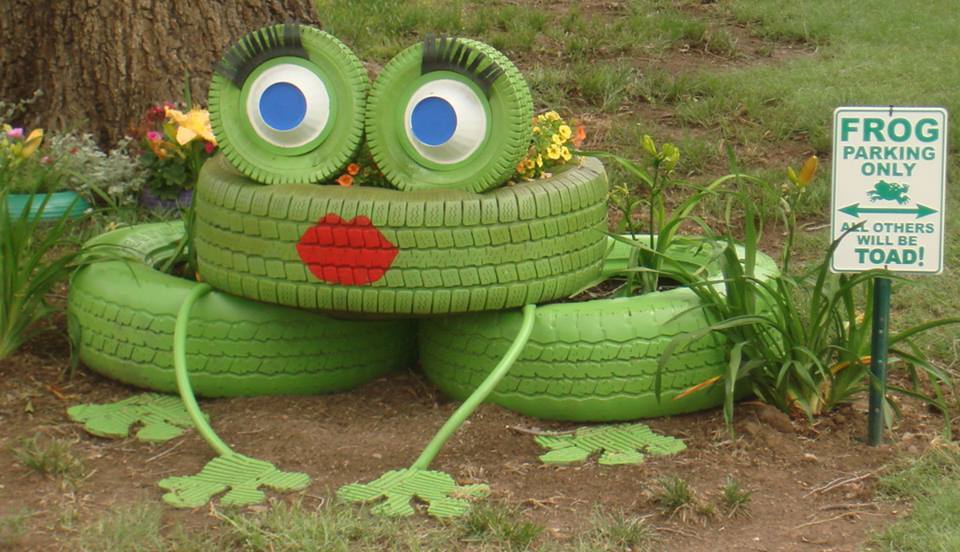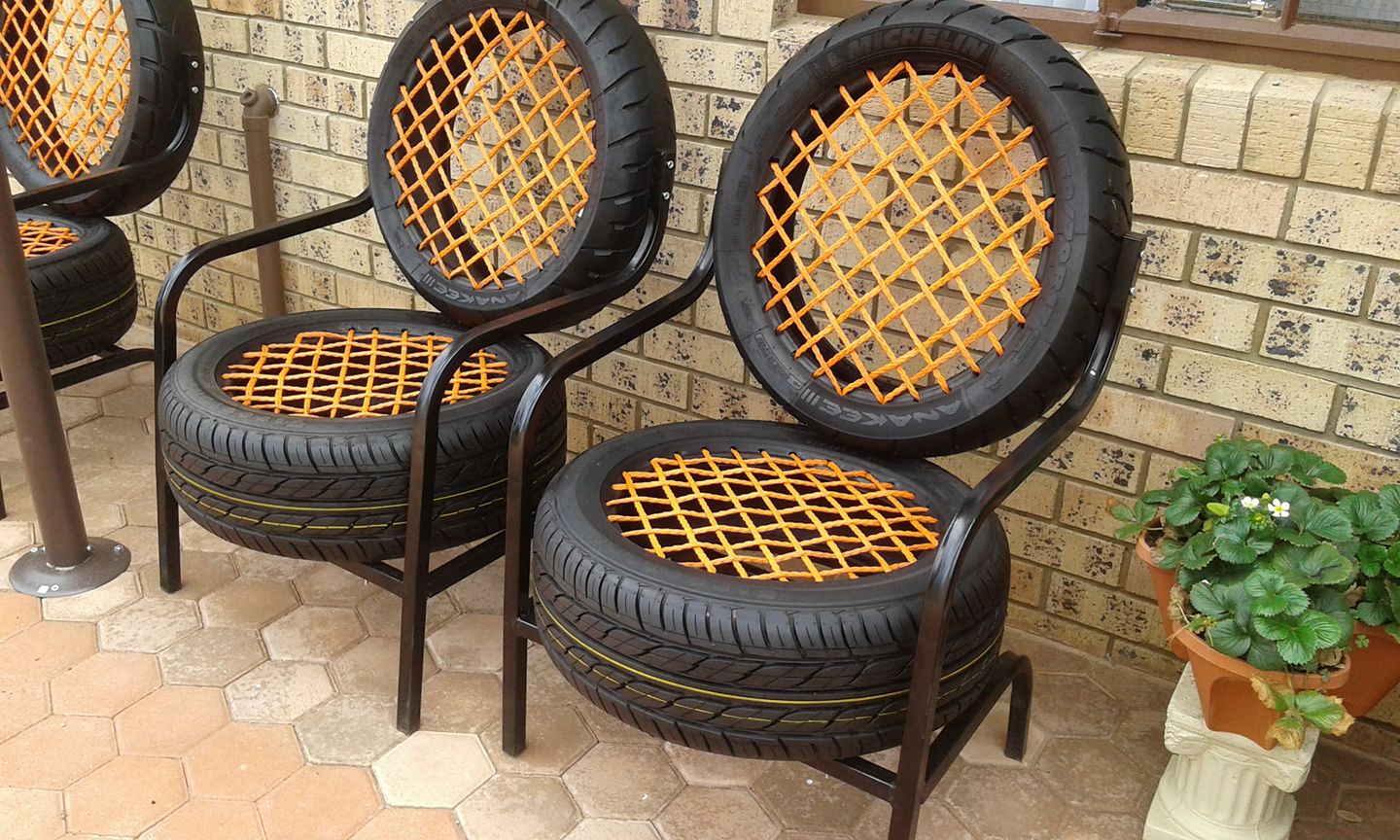
Upcycling used and discarded items to create functional dcor is becoming an increasingly popular trend in gardening. Tires are one such item that can be creatively transformed into various garden elements, adding a unique touch to your outdoor space.
Beyond their aesthetic appeal, repurposing tires for gardening also offers practical benefits. Tires are durable, weather-resistant, and provide excellent drainage, making them suitable for a wide range of gardening applications. Whether you’re looking to create raised garden beds, planters, or decorative elements, the possibilities are endless with a little creativity and some DIY know-how.
Garden Ideas with DIY Creative Tire
Upcycling used tires into creative garden elements offers a unique blend of sustainability, functionality, and aesthetics. Here are six key aspects to consider when exploring garden ideas with DIY creative tire:
- Durability: Tires are robust and long-lasting, making them ideal for outdoor use.
- Weather Resistance: Tires can withstand various weather conditions, including rain, sun, and frost.
- Drainage: The porous nature of tires provides excellent drainage, preventing waterlogging.
- Versatility: Tires can be transformed into a wide range of garden elements, from planters to furniture.
- Cost-Effective: Repurposing used tires is an economical way to create unique garden dcor.
- Sustainability: Upcycling tires reduces waste and promotes environmental conservation.
These key aspects highlight the practical and aesthetic benefits of utilizing tires in garden design. By embracing creativity and exploring different techniques, you can transform discarded tires into functional and visually appealing elements that enhance your outdoor space while promoting sustainability.

Durability
Incorporating durable materials into garden design is crucial for ensuring the longevity and functionality of outdoor spaces. Tires, known for their exceptional resilience and resistance to wear and tear, present a compelling choice for creative garden enthusiasts seeking sustainable and long-lasting solutions.
- Weather Resistance: Tires can endure extreme weather conditions, including intense sunlight, heavy rainfall, and fluctuating temperatures, without compromising their structural integrity. This makes them an ideal choice for outdoor planters and furniture, as they can withstand the elements without rotting, cracking, or fading.
- Pest Resistance: Unlike wood or other organic materials, tires are not susceptible to pests such as termites or rodents. This eliminates the need for chemical treatments or constant maintenance, ensuring the longevity of your garden creations.
- Impact Resistance: The robust nature of tires makes them highly resistant to impact and accidental damage. This is particularly beneficial in gardens frequented by children or pets, as it minimizes the risk of breakage or injury.
- Load-Bearing Capacity: Tires can withstand significant weight without deforming or collapsing. This makes them suitable for creating raised garden beds, seating, or other structures that require a strong base.
The exceptional durability of tires makes them an ideal choice for a wide range of garden applications. Their resistance to weather, pests, impact, and load-bearing capacity ensures that your creative tire projects will endure the rigors of outdoor use, providing lasting functionality and visual appeal.

Weather Resistance
Incorporating weather-resistant materials into garden design is paramount for ensuring the longevity and functionality of outdoor spaces. Tires, with their exceptional resilience to various weather conditions, offer a compelling choice for creative garden enthusiasts seeking sustainable and durable solutions.
The ability of tires to withstand rain, sun, and frost makes them ideal for a wide range of garden applications. Rainwater can seep through the porous surface of tires, providing natural irrigation for plants while preventing waterlogging. The UV rays of the sun do not degrade the structural integrity of tires, ensuring that they retain their shape and color over time. Tires can also endure freezing temperatures without cracking or becoming brittle, making them suitable for gardens in colder climates.
By utilizing tires in garden designs, you can create elements that are not only visually appealing but also highly functional and long-lasting. Whether it’s raised garden beds, planters, or decorative sculptures, the weather resistance of tires ensures that your creations will endure the elements and continue to enhance your outdoor space for years to come.

Drainage
When considering garden ideas with DIY creative tire, drainage is a crucial factor to ensure the health and well-being of plants. The porous nature of tires provides exceptional drainage, preventing waterlogging and promoting optimal root development.
- Enhanced Root Growth: Good drainage allows excess water to drain away from the roots, preventing waterlogging and root rot. This creates an environment conducive to healthy root growth, resulting in vigorous and resilient plants.
- Reduced Disease Risk: Waterlogged soil can lead to the proliferation of harmful bacteria and fungi that can cause root diseases. The excellent drainage provided by tires minimizes the risk of such diseases, ensuring the overall health of plants.
- Versatility in Plant Selection: Good drainage expands the range of plants that can be grown in tires. Even plants that are sensitive to overwatering can thrive in tire planters due to the efficient drainage.
- Extended Tire Lifespan: Proper drainage prevents water from accumulating inside tires, which can weaken the material over time. By allowing water to drain freely, the longevity of tires as garden elements is increased.
The exceptional drainage provided by tires makes them an ideal choice for a wide range of garden applications, from raised garden beds and planters to vertical gardens and decorative sculptures. By incorporating tires into your garden designs, you can create a thriving and aesthetically pleasing outdoor space while promoting plant health and sustainability.

Versatility
The versatility of tires in garden design is a key aspect that makes them an attractive choice for DIY enthusiasts and creative gardeners. Tires can be transformed into a wide range of garden elements, from planters to furniture, offering endless possibilities for customization and personalization.
- Planters: Tires can be easily converted into unique and functional planters. By cutting the sidewalls and painting them in various colors, you can create eye-catching containers for flowers, herbs, or vegetables.
- Raised Garden Beds: Tires stacked on top of each other can form raised garden beds, providing improved drainage and soil aeration. This is particularly beneficial for plants that require well-drained soil, such as tomatoes and peppers.
- Vertical Gardens: Tires can be repurposed into vertical gardens, allowing you to maximize space and create a living wall. By attaching tires to a vertical surface and filling them with soil, you can grow a variety of plants, including strawberries, succulents, and trailing vines.
- Seating and Furniture: With a little creativity, tires can be transformed into comfortable seating and furniture for your garden. By stacking tires and adding cushions or upholstery, you can create unique chairs, benches, or even ottomans.
The versatility of tires extends beyond these examples, as they can also be used to create decorative elements such as sculptures, stepping stones, and borders. By embracing the versatility of tires, you can unleash your creativity and design a garden that is both functional and visually appealing.

Cost-Effective
Incorporating cost-effective solutions into garden design is essential for making gardening accessible and enjoyable for everyone. Repurposing used tires as creative garden elements offers a sustainable and economical approach to creating a unique outdoor space.
Used tires are readily available and often free or low-cost to obtain. This makes them an attractive option for budget-conscious gardeners looking to add unique and functional elements to their gardens. By transforming discarded tires into planters, raised garden beds, or decorative sculptures, you can save money while reducing waste and promoting environmental conservation.
The cost-effectiveness of using tires in garden design has significant practical implications. It allows gardeners to create beautiful and functional outdoor spaces without breaking the bank. This is particularly beneficial for community gardens, schools, or individuals with limited resources. By embracing the cost-effective nature of repurposing tires, gardening becomes more accessible and inclusive, fostering a love for nature and creativity among diverse communities.

Sustainability
The concept of sustainability plays a vital role in modern garden design, and the use of recycled materials, such as tires, embodies this principle. Upcycling tires for creative garden elements not only reduces waste but also promotes environmental conservation. Discarded tires, often destined for landfills, can be transformed into unique and functional garden features, extending their lifespan and diverting them from contributing to environmental pollution.
By incorporating upcycled tires into garden designs, we actively participate in reducing the environmental impact of waste tires. This practical approach to sustainability sets an example for responsible resource management and encourages a circular economy. Moreover, it raises awareness about the importance of waste reduction and the creative potential of repurposing discarded materials.
The connection between sustainability and “garden ideas with DIY creative tire” goes beyond environmental benefits. It fosters a deeper appreciation for sustainable practices and encourages gardeners to consider the ecological impact of their choices. By embracing upcycling, we not only beautify our gardens but also contribute to a greener and more sustainable future.

FAQs on Garden Ideas with DIY Creative Tire
This section addresses frequently asked questions and concerns regarding the use of tires in garden design, providing informative answers to guide your creative endeavors.
Question 1: Are tires safe to use in gardens?
Tires are generally safe for garden use when proper precautions are taken. Ensure tires are thoroughly cleaned to remove any dirt or debris, and avoid using tires that have been exposed to hazardous materials. Additionally, consider painting or sealing the tires to prevent leaching of chemicals into the soil.
Question 2: How do I prepare tires for use in the garden?
Before using tires in the garden, it’s essential to prepare them properly. Clean the tires thoroughly with soap and water to remove any dirt or debris. If desired, paint or seal the tires to enhance their appearance and prevent leaching. For planters, cut the sidewalls of the tire to create an opening for soil and plants.
Question 3: What types of plants can I grow in tires?
Tires are suitable for growing a wide range of plants, including flowers, herbs, vegetables, and even small shrubs. Consider the size and drainage needs of the plants when selecting species for tire planters. Vegetables like tomatoes, peppers, and strawberries thrive in tires due to the improved drainage.
Question 4: How do I maintain tires used in the garden?
Maintaining tires in the garden is relatively easy. Regularly check the tires for any damage or wear and make necessary repairs or replacements. Clean the tires periodically to remove dirt or debris accumulation. If the tires are painted or sealed, touch up the finish as needed to maintain their appearance.
Question 5: Are there any limitations to using tires in the garden?
While tires offer many benefits in the garden, there are a few limitations to consider. Tires are not suitable for all types of plants, particularly those with deep root systems or that require acidic soil. Additionally, painted or sealed tires may limit the breathability of the soil, so monitor plant health closely.
Question 6: How can I creatively incorporate tires into my garden design?
Tires can be creatively incorporated into garden designs in various ways. Use tires to create raised garden beds, vertical gardens, planters, or decorative sculptures. Paint the tires in bright colors or create mosaic designs to add visual interest. Stack tires to form unique seating arrangements or use them as borders to define different garden sections.
In summary, using tires in garden design offers a sustainable and creative approach to creating unique outdoor spaces. By properly preparing and maintaining tires, you can enjoy the benefits of durable, weather-resistant, and versatile garden elements while promoting environmental conservation.
